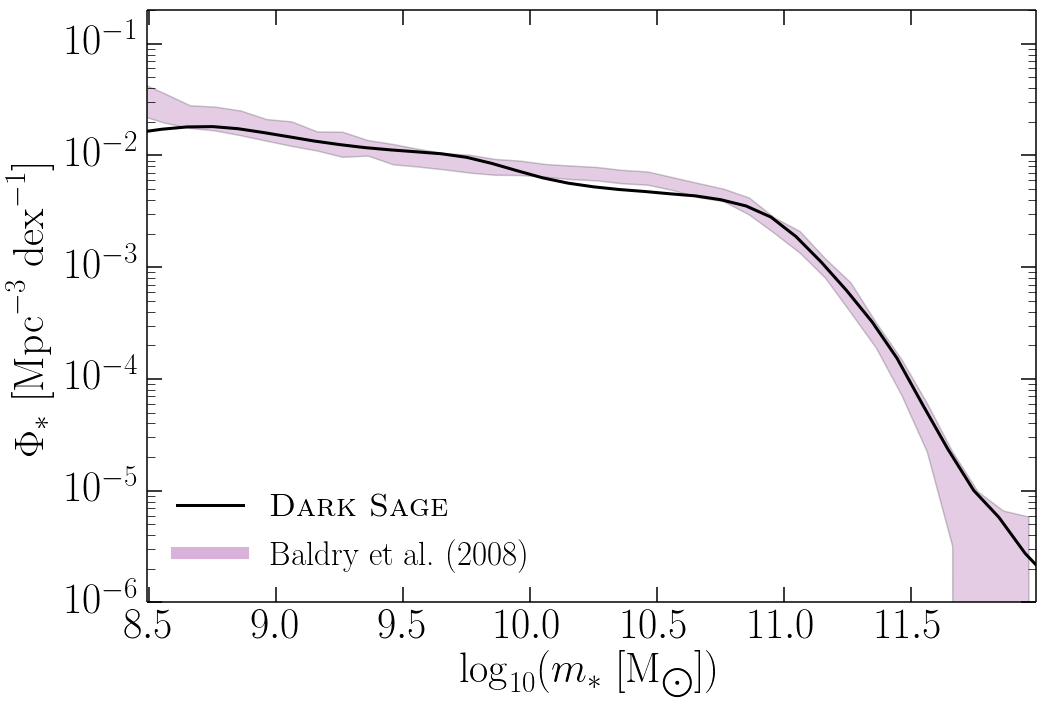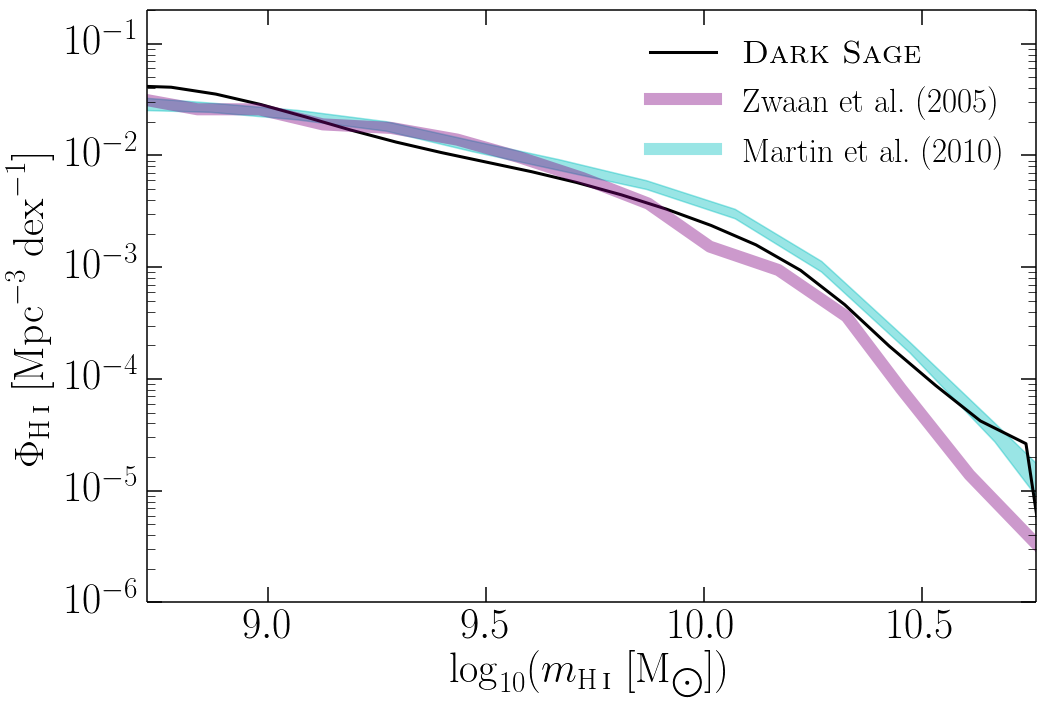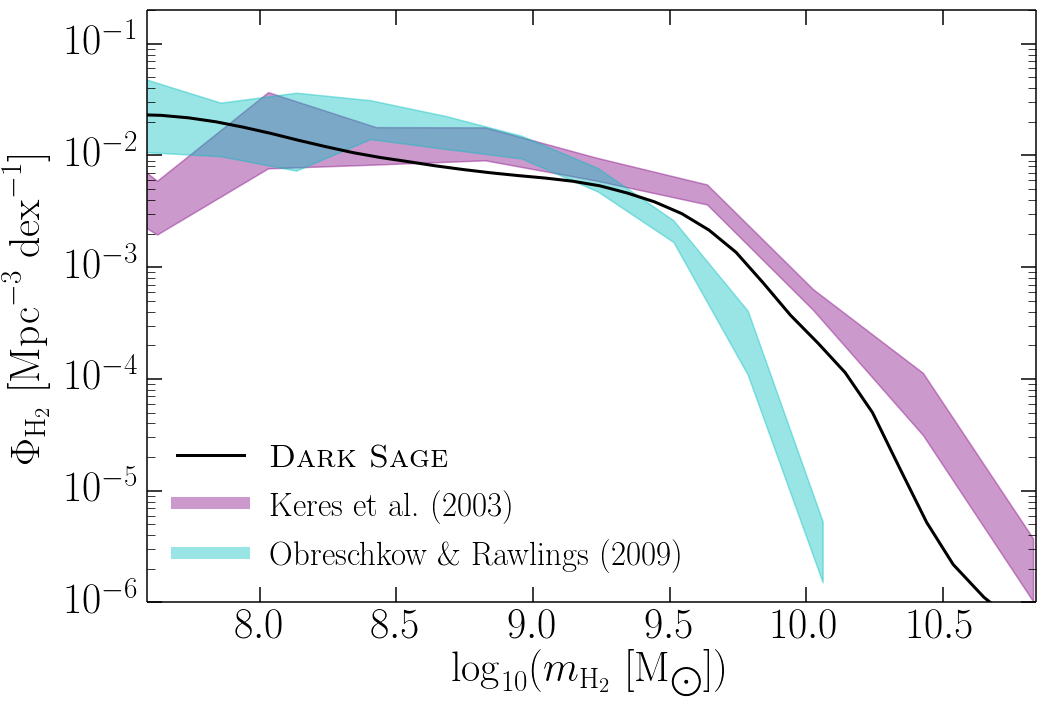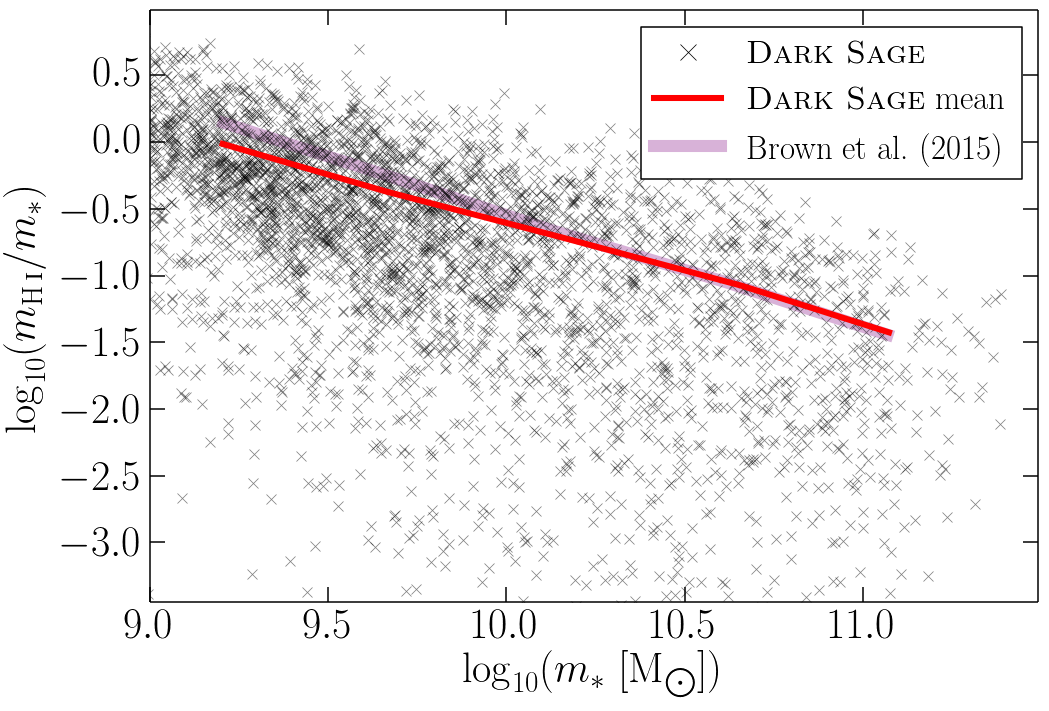Data Guide | Dark SAGE
Dark Sage is a heavily modified version of SAGE that evolves galaxies through local processes in a series of disk annuli that have fixed specific angular momentum and are kinematically distinct from multiple bulge components. By evolving the one-dimensional structure of galactic disks, Dark Sage can meaningfully compute the atomic and molecular hydrogen contributions to cold gas, and predict properties like sizes, specific angular momenta, and metallicity gradients for stellar and gas components. The model is presented in Stevens et al. (2016). Some extra details can be found in the thesis of Stevens (2016) and in the paper by Stevens & Brown (2017). The Dark Sage codebase is publicly available on Github and the ASCL.
Model Physics

Several aspects of Dark Sage are already described on the SAGE page. These include gas infall, cooling and accretion, and radio mode feedback. New features of the model include the following.
Disk structure and cooling
Each galaxy in Dark Sage contains a gas disk and a stellar disk. Each of these is broken into 30 annuli, which are bounded by fixed values of specific angular momentum. The equivalent radial coverage of an annulus depends on the galaxy's rotation curve, which is updated regularly, assuming analytic density profiles for dark matter, hot gas, etc. Fresh gas that cools or is accreted onto a galaxy is assumed to carry an exponentially decaying profile as a function of specific angular momentum, with a net specific angular momentum (in both direction and magnitude) equivalent to that of the halo at the time. The net angular momentum vectors of the cooling gas and the pre-existing gas disk are summed to define the new disk plane; the content of both disks is then projected onto this new plane. Within each gas annulus, the atomic and molecular hydrogen contents are calculated using a mid-plane pressure prescription.
Passive star formation
Star formation is calculated locally within each gas annulus. The star formation rate of an annulus is directly proportional to its H2 content. The instantaneous recycling approximation is maintained. Stellar feedback is applied locally in each annulus. The amount of reheated material is proportional to the star formation rate, but also inversely proportional to the local gas density. The orientation of the stellar disk after a star formation episode is found by summing the angular momentum vectors of the newborn (parallel to the gas disk) and pre-existing stellar disks and projecting those disks onto the new plane. While the gas and stellar disks need not always be aligned, the gas disk experiences a torque from the stars and precesses about them to slowly return coplanarity.
Disk instabilities
The Toomre Q stability of each annulus is calculated regularly. Should an annulus be unstable, i.e. Q<1, mass must be shifted out of this annulus to bring it back to stability. If gas is unstable, a fraction of this gas will be shifted to the two adjacent annuli, while the rest will be consumed/reheated by a starburst and stellar feedback. Unstable stars are all transferred to the adjacent annuli, in proportion such that angular momentum is conserved. Unstable material in the innermost annulus can be transferred to the instability-driven bulge or accreted onto the black hole. This is the dominant mode of star formation for stars that reside in high-mass galaxies in the model.
Gas stripping and merging of satellite galaxies
As in SAGE, the hot gas of a satellite galaxy is stripped in proportion to its dark matter as it falls into a halo. In addition though, Dark Sage includes ram-pressure stripping of cold gas. Should the hot gas mass surrounding the satellite be smaller than the galaxy mass itself, ram-pressure stripping is applicable to each annulus. If the gravitational restoring force per unit area for an annulus is less than the ram pressure it experiences, all cold gas in that annulus is transferred to the central's hot reservoir.
When a satellite merges with a central galaxy, its stars are transferred to the merger-driven bulge. Gas from the satellite is placed in the central's annuli whose specific angular momenta matches the satellite's measured specific angular momentum (with some smoothing) relative to the central at the last snapshot before merging.
Active galactic nuclei
The radio mode in Dark Sage matches that of SAGE. The quasar mode has been slightly modified. When quasar accretion takes place, the energy available is compared to the innermost annulus. If that energy exceeds the unbinding energy of the annulus, all that gas is unbound. The remaining energy is then compared with the next annulus, conducting the same process until all available quasar energy is consumed. If energy remains after unbinding all the cold gas from the disk, then the hot gas in the halo can also be ejected.
Calibration
Dark Sage was calibrated to a set of observational galaxy properties at z=0. The primary constraints include the stellar, HI, and H2 mass functions, and the HI fraction of galaxies as a function of stellar mass. Secondary constraints include the Baryonic Tully–Fisher relation, the black hole–bulge mass relation, the mass–metallicity relation, and, loosely, the Madau–Lilly diagram. The following plots were produced using the version of Dark Sage available on TAO with the Millennium simulation.



